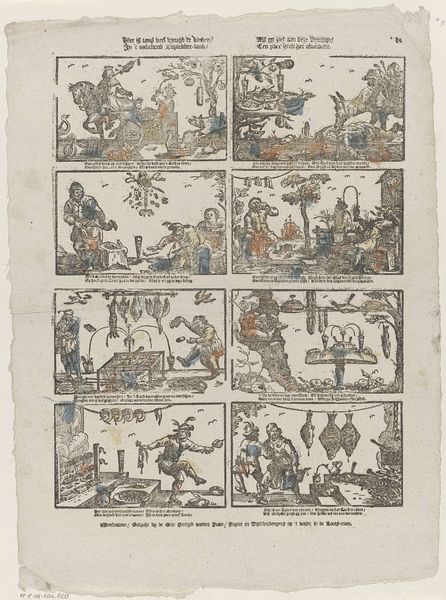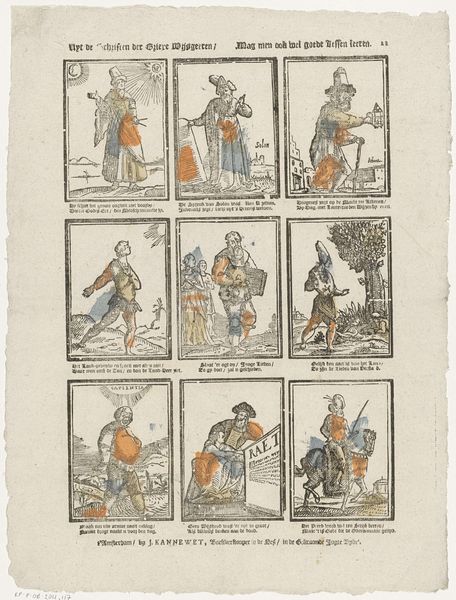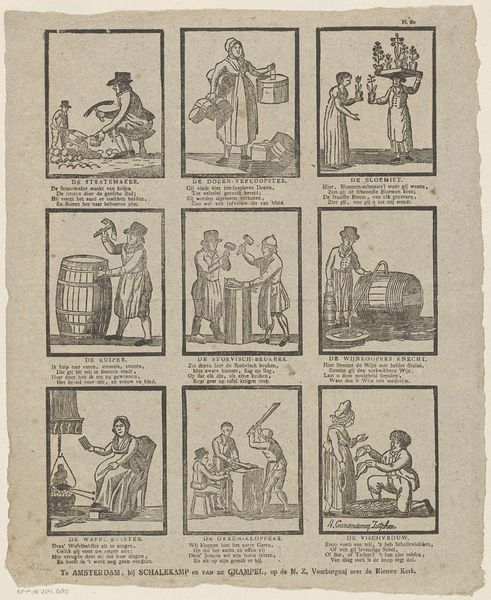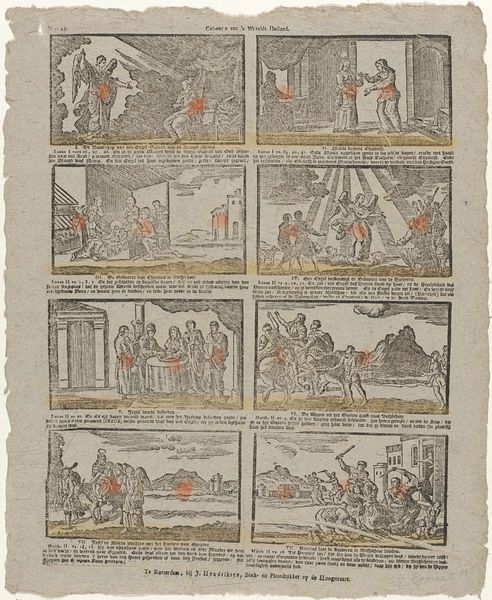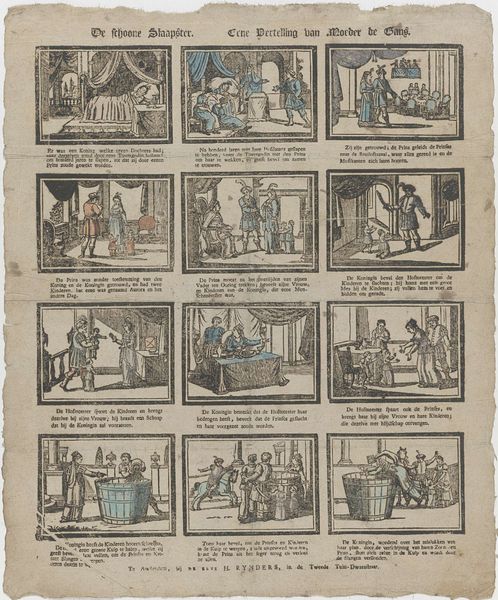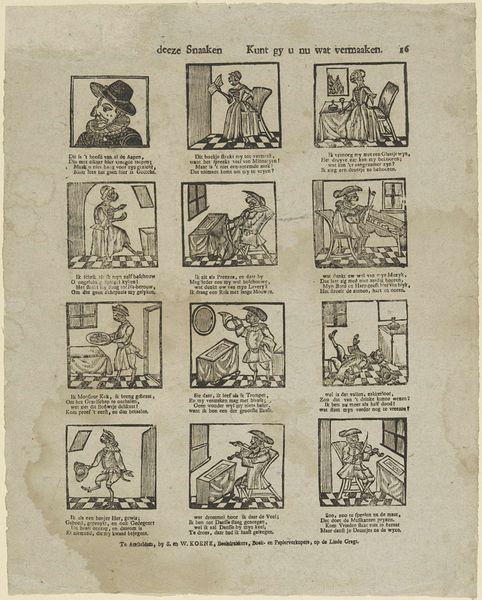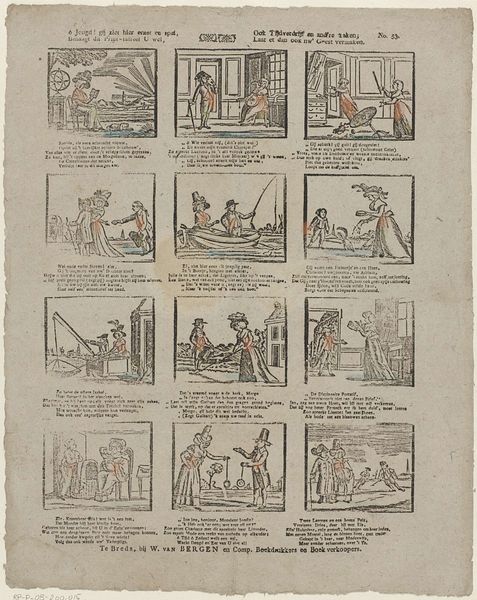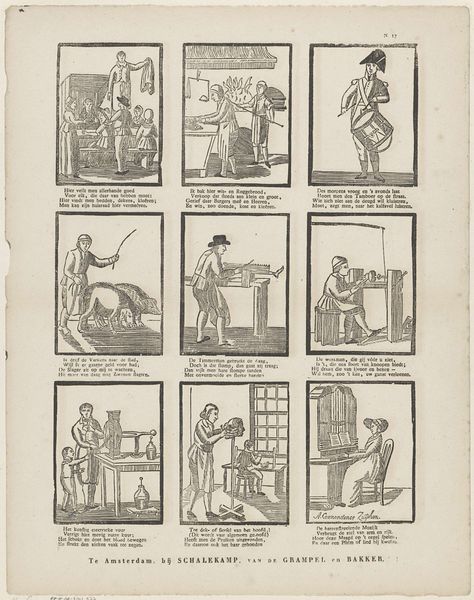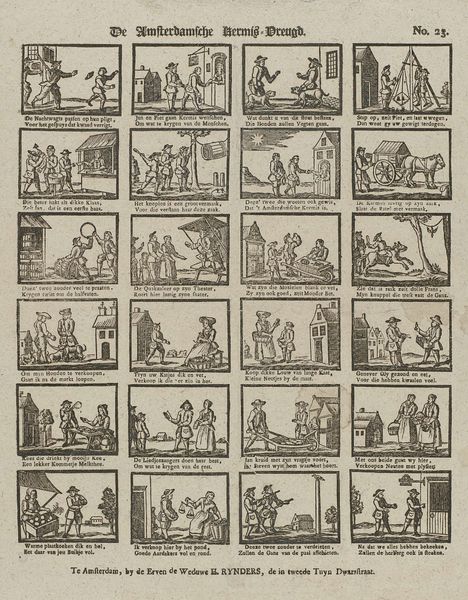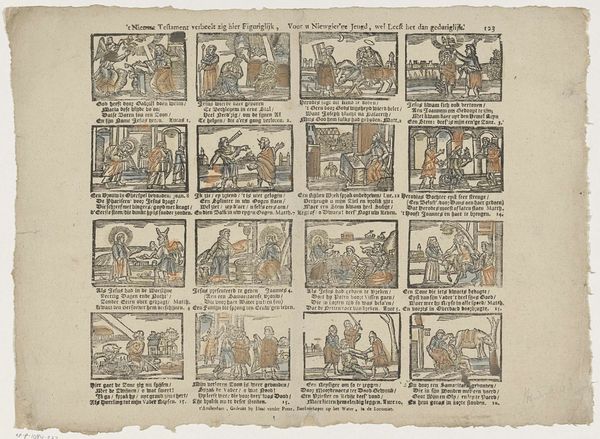
Ey ziet hier eens de bruyloft aan / Van Krelis en Martjen van Ooszaan 1725 - 1780
0:00
0:00
johannesiikannewet
Rijksmuseum
print, etching
#
narrative-art
#
dutch-golden-age
# print
#
etching
#
caricature
#
comic
#
genre-painting
Dimensions: height 410 mm, width 312 mm
Copyright: Rijks Museum: Open Domain
Curator: Welcome to the Rijksmuseum. We’re looking at “Ey ziet hier eens de bruyloft aan / Van Krelis en Martjen van Ooszaan,” a Dutch Golden Age etching dating from 1725 to 1780. It’s attributed to Johannes Kannewet. Editor: Oh, my first thought is... mayhem! It feels like a boisterous, slightly tipsy comic strip. Four little windows into what seems like a very lively, slightly chaotic wedding celebration. Curator: Exactly. Kannewet's work often functions as narrative art, presenting us with glimpses into everyday life, although perhaps with a slightly satirical edge. Look closely at each scene. What do you observe? Editor: Well, in the first, a musician’s perched precariously on a barrel, sawing away at his fiddle while folks carouse around a table. Then, what looks like clumsy dancing, and someone... tossing their hat? The final scene seems like settling in for a serious drinking session! The composition really guides the eye in a very dynamic, humorous way. It’s comic, almost! Curator: The humor is key, and it is not only a representation but likely a commentary on social customs. Genre paintings like these provide us with a window into Dutch society. The title translates roughly to "See here the wedding of Krelis and Martjen from Ooszaan," suggesting these were real people. Editor: The figures do have this everyman quality, like characters you’d run into at the local pub. It makes me wonder what Ooszaan was like back then, and whether Krelis and Martjen were in on the joke. Did they think this was flattering? Curator: That’s the fascinating tension inherent in caricature. Was it celebratory or mocking? Or perhaps a bit of both. These kinds of prints were accessible, circulating among a broader audience than paintings, impacting public perception of class, custom, and morality. Editor: You know, looking at the rough etching lines, it feels wonderfully… unfiltered. Almost punk. I can imagine people tacking this up on a wall, sharing a laugh. There’s a raw immediacy that I just love. Curator: Its accessibility through printmaking allowed these works to shape public opinion, a function perhaps akin to a political cartoon today. They acted as cultural touchstones within Dutch society. Editor: Thinking about it now, maybe every generation needs its Krelis and Martjen print – a little slice of humorous reality to keep us all honest, or at least amused. Curator: Indeed. A valuable reminder that art’s engagement with society takes many forms, from grand portraiture to humble comic etchings.
Comments
No comments
Be the first to comment and join the conversation on the ultimate creative platform.

